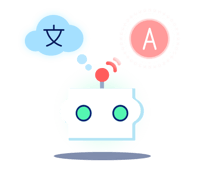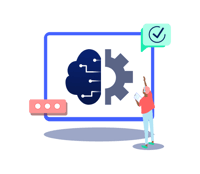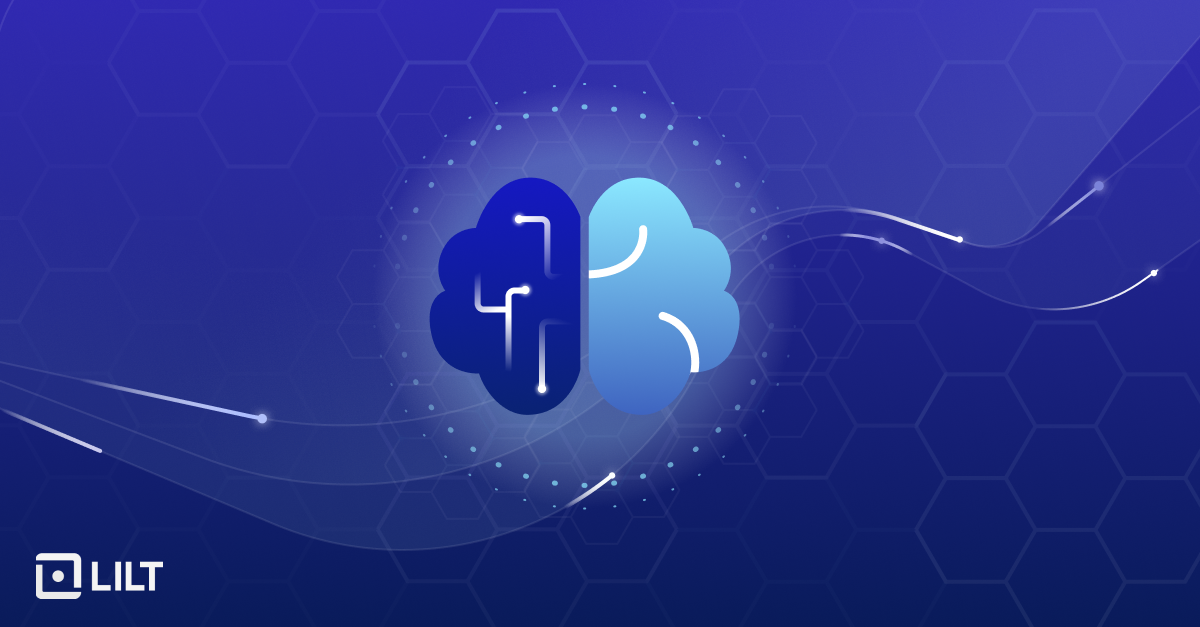Custom Engine Development vs. LLM Fine Tuning/In-Context Learning for Translating Content

With so many new technologies and AI tools emerging in the market, it can be difficult for enterprise translation and/or localization customers to understand the differences between custom engine development and LLM fine-tuning for specific content types (e.g., marketing copy, legal contracts, e-commerce product descriptions). This blog post will provide a better understanding of these two approaches and explain how In-Context Learning (ICL) can be used to improve the accuracy and efficiency of translation.
Custom Engine Development vs. Adaptive Engine Training
When it comes to machine translation, two of the most popular approaches are custom engine development and adaptive engine training. While both approaches have their own unique advantages and challenges, the difference between custom engine training and LLM fine-tuning lies in how the model's parameters are adjusted to better fit specific content types. Custom engine development involves creating a new system from scratch, while LLM fine-tuning focuses on training existing models to recognize and respond to specific types of content.

Custom engine development is the process of training a model's parameters once using a content-specific dataset and deploying those parameters. In the past, the standard approach to translation was to develop a custom engine for each content type. This involved collecting a large dataset of source and target text pairs for the specific content type, and then training a machine translation model on this data. Once the model was trained, it could be deployed to translate new text.

Adaptive Engine Training
Adaptive engine training, on the other hand, is a newer approach to translation that addresses some of the limitations of custom engine development and involves continuously updating the deployed model's parameters with a constant stream of new training examples. This approach eliminates the need to retrain and redeploy the entire model, ensuring the model is always trained on the most recent data and improves its accuracy over time. Lilt pioneered and began developing this technology in 2015, revolutionizing the way enterprise companies approach enterprise translation.
Adaptive engine training is more efficient than custom engine development, but it is still not as efficient as In-Context Learning. This is because adaptive engine training requires a large amount of data to train the model.
Where We Are Now with In-Context Learning/LLM Fine-Tuning
In-Context Learning or LLM Fine-Tuning takes the adaptive engine training approach further by allowing for rapid customization of a single model to a specific content type. With In-Context Learning, a machine translation model is trained on a single example of the content type to be translated. This allows the model to be customized to the specific content type without the need for a large dataset of training data.
In recent years, In-Context Learning or LLM Fine-Tuning has become the preferred approach for achieving accuracy and efficiency in translation. This approach allows for continuous training of a deployed model and comprises two techniques: fine-tuning and few-shot prompting.
Fine-Tuning
Fine-tuning is the process of adjusting the model's parameters for each new example. It is a technique specific to neural networks that adjusts the model's parameters for each new example, leading to even higher accuracy.
Few-Shot Prompting
Few-shot prompting involves adding training examples to the input of the deployed model to influence the model's output without adjusting its parameters.
One of the biggest advantages of ICL and LLM Fine-Tuning is that it eliminates the need for multiple model evaluations. With a single model, ICL allows for the rapid customization of models for specific content types, resulting in even higher accuracy and efficiency.
That said, In-Context Learning is the most efficient and accurate approach to translation. It is a newer approach, but it is quickly becoming the standard for translation.
Final Considerations: Choosing the Right Approach for Your Business
As with any technology, there is no one-size-fits-all solution when it comes to custom engine development versus LLM fine-tuning. The approach you choose should be tailored to your specific needs, budget, and timeline. By carefully considering these factors, you can choose the approach that will deliver the best results for your company.
Consider the resources you have available to you. Custom engine development requires a significant investment of time, money, and expertise. If you don't have these resources, or if your content is constantly evolving, LLM fine-tuning may be a more practical solution for your business.
Finally, consider your long-term goals. If you plan on scaling your translation efforts and adding new content types in the future, a custom engine may be a better investment. However, if you're looking for a more flexible solution that can adapt to changing content needs, LLM fine-tuning may be the way to go.
While both custom engine training and adaptive engine training can produce high-accuracy models, ICL allows for customization and continuous training, leading to better results for specific content types and making it the preferred approach for many businesses. Ultimately, the right approach for your business will depend on your specific needs and requirements.



